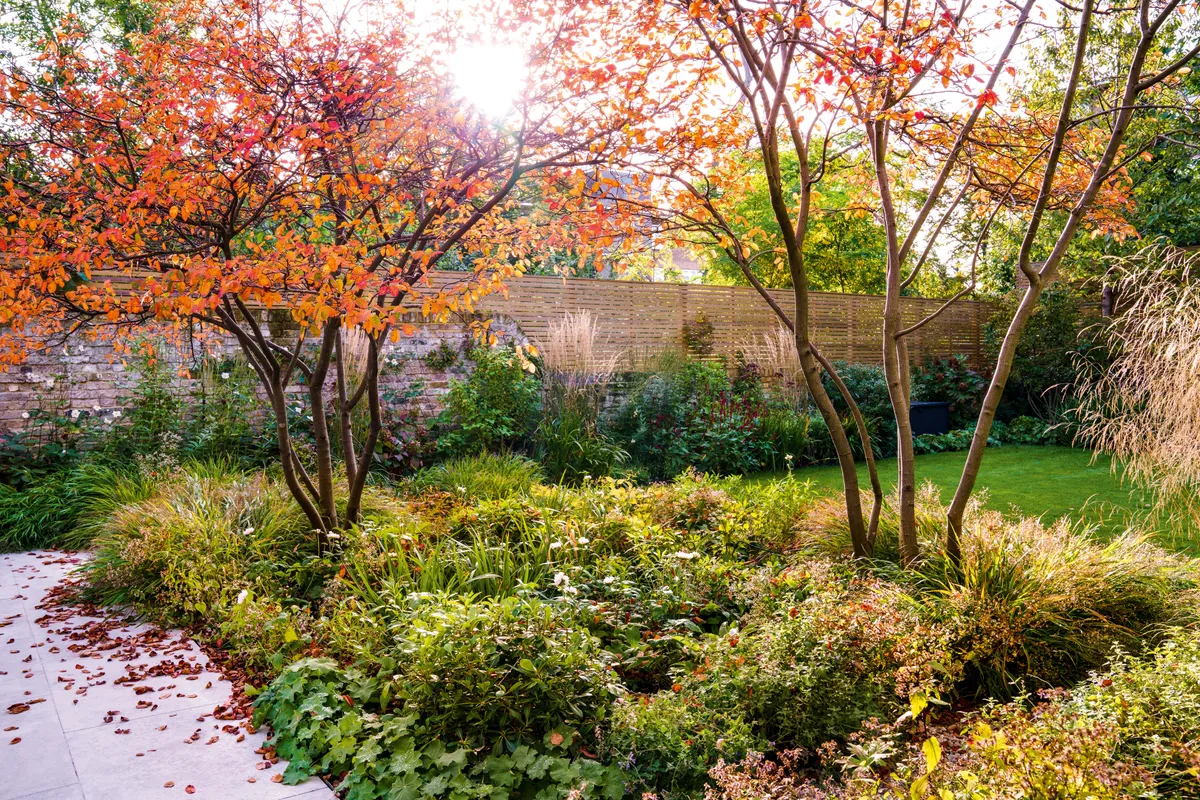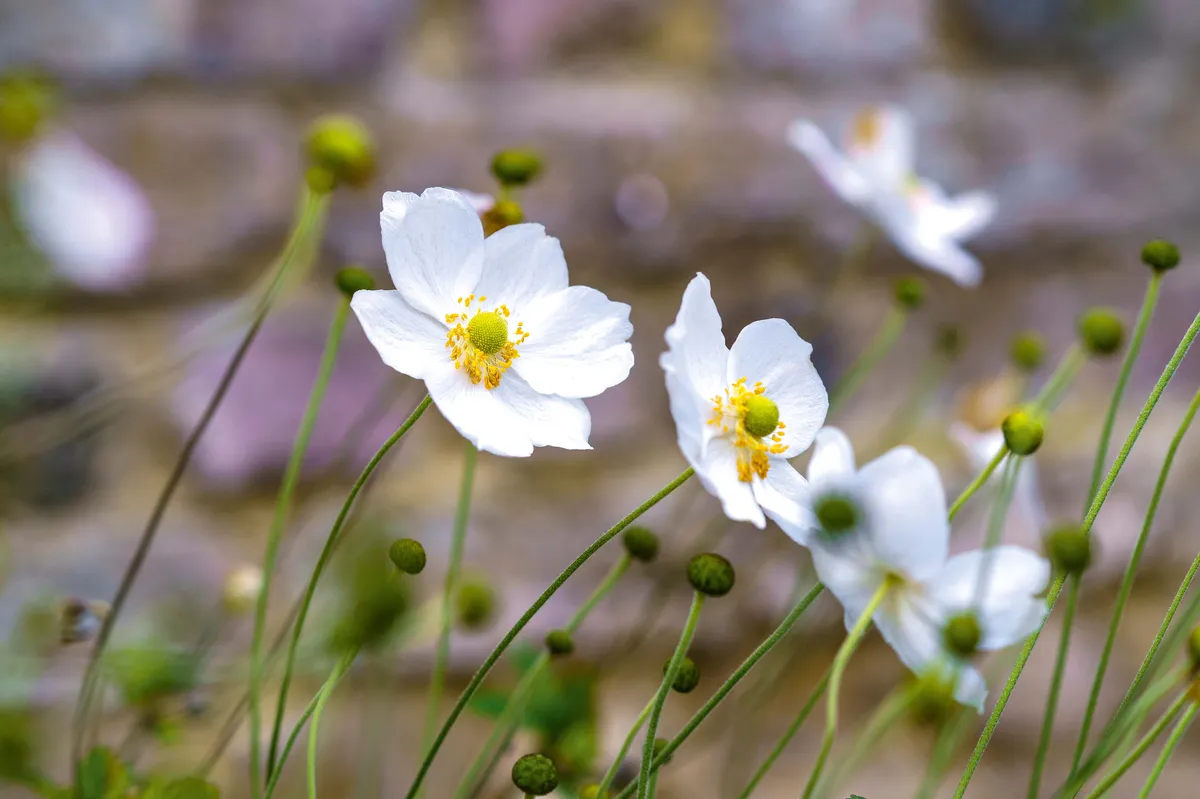Among the many benefits of urban living, privacy is rarely top of the list. Those lucky enough to have gardens often find themselves overlooked, with the all-too-frequent result that the space goes unused – it’s hard to relax if you feel observed. So it was at this project in Brockley, south London, where a block of flats to the rear looked directly on to the house and garden.

“The previous owners had done a ‘protest planting’ of sorts,” says George Cullis of Studio Cullis, who was commissioned to redesign the space. “Two 14m-high leylandii and an 8m bay tree did block out the flats very effectively, but they also made the garden dark, inhospitable – nothing would grow beneath the trees – and completely unusable as a family garden.” New owners Nick and Zoe agreed. “We wanted somewhere that would draw us out into the space while still providing a degree of privacy,” says Nick. A lawn and large terrace were key requirements, and there were some more unusual requests, too. “We wanted quite naturalistic, understated planting,” says Zoe. “And since we have a lot of family birthdays in spring and late summer/autumn, we decided these were the moments when we would like the garden to peak.”
Taking inspiration from both forest gardens and the small, urban gardens at the South London Gallery (designed by Fraser & Morris) and the Garden Museum (designed by Dan Pearson), George has created a garden that fulfils the brief admirably. To address the need for privacy, George has chosen deciduous trees with both beautiful blossom and late-season colour, as well as a relatively dense tracery of winter branches, as the backbone of the garden.
What Family garden with wildlife corridor, designed to peak in spring and autumn, and to screen the house from flats beyond. Where London. Size 19m x 10m. Soil Loamy clay. Climate Temperate, northwest-facing garden. Hardiness zone USDA 9.

Different zones include a large terrace, a lawn and, close to the house, a wide, deep bed to capture the attention and draw the owners outside. The side beds, with their mix of shrubs, grasses and perennials, were inspired by a visit to RHS Garden Rosemoor in Devon.

A pair of Amelanchier x lamarckii planted close to the house work with the cherries at the rear to effectively screen out the flats beyond. Cornus kousa var. chinensis help to hide the trunks of the cherry trees and combine with Libertia chilensis and Pittosporum tobira ‘Nanum’ to create the wildlife corridor stipulated in the planning requirements, which is designed to be left largely untouched.

Wide limestone steps from the house to the terrace act as additional seating, making this a fantastic space for entertaining. The small, raised herb bed close to the house is a practical and attractive touch. Though the clients were not initially keen on grasses, they have come to love the movement they add to the garden.

The russet tones of the amelanchiers are picked up in other plants around the garden. These include the Gillenia trifoliata beneath the trees and the crimson glory vine, Vitis coignetiae, planted along one of the side walls. Plants such as Hakonechloa macra and Nepeta racemosa ‘Walker’s Low’ are allowed to spill over the gravel paths, creating a relaxed, informal feel.

The deep bed nearest the house has been designed to peak in spring and autumn, in line with the family’s birthdays. Early in the year Helleborus foetidus mixes with snowdrops (Galanthus elwesii) and crocuses, followed by narcissi, Fritillaria meleagris and tulips. Later on Eurybia divaricata, Hakonechloa macra, Pennisetum alopecuroides ‘Hameln’ and Anemone hupehensis var. japonica ‘Tiki Sensation’ take over the show.
KEY PLANTS
Euphorbia mellifera

A sturdy, dome-shaped shrub that can withstand the odd stray ball. Beautiful in rain when droplets sit like mercury on the leaves, it bears honey-scented flowers in spring. 2m. AGM*. RHS H3†.
Anemone x hybrida ‘Honorine Jobert’

Used repeatedly throughout the garden, both for its long-lasting foliage and its pure white flowers, which light up shadier areas. A spreader, but easy to pull up. 1.25m. AGM*. RHS H7, USDA 4a-8b.
Read our guide on how to grow anemone
Bistorta amplexicaulis ‘Blackfield’

A perennial that’s as good for its foliage – neat clumps of heart-shaped leaves – as its deep-red flower spikes, which last from midsummer to mid-autumn. 75cm. AGM. RHS H7.
Read our guide on how to grow persicaria or bistorta
Hydrangea quercifolia

The oak-leaved hydrangea has beautiful, cream-coloured, conical flowers in summer and as the flowers fade in autumn, the green leaves flush red and purple. 1.25m. RHS H5, USDA 5a-9b.
USEFUL INFORMATION Find out more about George’s work at studiocullis.com
This garden featured in our October issue of Gardens Illustrated. Subscribe here
